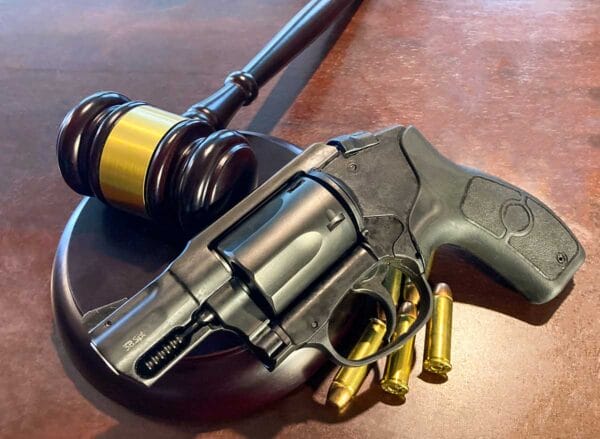
A three-judge panel from the Ninth Circuit Court of Appeals upheld part of an injunction on concealed carry restrictions in Hawaii and California while striking down other parts.
The ruling was for three different cases, including May v. Bonta, which was a joint effort between Gun Owners of America (GOA), Gun Owners of California (GOC), Gun Owners Foundation (GOF), The Second Amendment Foundation (SAF), California Rifle & Pistol Association (CRPA), and the Liberal Gun Owners Association (LGOA). The other California case, Carralero v. Bonta, was filed by the Firearms Policy Coalition (FPC), Orange County Gun Owners (OCGO), San Diego County Gun Owners PAC (SDGO), and the California Gun Rights Foundation (CGRF). The Hawaii case, Wolford v. Lopez, was filed by the Hawaii Firearms Coalition (HFC). All the lawsuits challenge restrictions on concealed carrying firearms after the Supreme Court’s landmark decision in Bruen.
The court’s ruling was a mixed bag. Although the court did agree with the District Judges’ decision to enjoin the laws for specific places, it lifted the injunction for other areas. In Bruen, SCOTUS said concealed carry restrictions could be implemented in limited circumstances if a place was considered “sensitive.” The examples given were courthouses and schools. States would use the “sensitive area” designation to severely limit the places where someone can carry a firearm. The first and most famous of these laws was the New York State Concealed Carry Improvement Act (CCIA). Other states would soon follow New York State’s lead and ban the carrying of firearms across vast swaths of these states.
The judges would rely on a Bruen analysis to determine if the challenged laws were unconstitutional. The first step of a Bruen analysis is to see if the law is consistent with the original text of the Second Amendment. The judges agreed that the plaintiffs are part of “the people.” The “arms” in question were undoubtedly protected under the Second Amendment because of the Heller ruling. In Heller, the Supreme Court said that firearms that are in common use cannot be banned.
The second step is a historical analysis of the challenged law. The government must provide historical analogues to prove that a law is consistent with the text and tradition of firearms regulation from the founding era. Most legal scholars agree that this is the ratification date of the Second Amendment in 1791. However, some anti-gun groups try to push the notion that the founding era was in 1868 when the 14th Amendment was ratified.
The states tried to provide analogues but used laws from the late 19th century, far removed from the founding era. The judges were not swayed by the state’s arguments that it could legally ban the carrying of firearms in places of worship, hospitals, gathering places that require a permit, financial institutions such as banks, and parking lots connected to sensitive places unless the parking is specifically within those locations such as a parking garage in a sub-basement. It also said the California law banning firearms on public transportation is probably unconstitutional because it bans all firearms, including unloaded guns, in a storage container. The court noted that if the state only banned loaded firearms from being carried by a person, that would most likely be legal.
“In sum, we hold that Plaintiffs are likely to succeed in their challenge to California’s broad prohibition on the carry of firearms on public transit,” the judges wrote. “But we emphasize that our holding hinges on the law’s categorical nature. A ban on the carry of firearms on public transit almost certainly would be constitutionally permissible if the law allowed the carry of unloaded and secured firearms.”
The court sided with the defendant on the banning of carrying a gun at “places of amusement.” These areas include casinos, stadiums, amusement parks, zoos, museums, and libraries. The judges ruled that the state could issue concealed carry restrictions since these areas didn’t exist during the founding era. The court also ruled that the states could ban the carrying of firearms in parks. The judges said that parks didn’t exist in the founding era either, although there were green spaces that didn’t ban guns. The judges said that these areas were too different to carry any weight.
Both sides have declared victory in the case. Now, the case will move on to the hearing on the merits. It is unclear if either side will ask for an en banc hearing where the entire Ninth Circuit bench will hear the case. The court granting an en banc hearing is not a given.
About John Crump
Mr. Crump is an NRA instructor and a constitutional activist. John has written about firearms, interviewed people from all walks of life, and on the Constitution. John lives in Northern Virginia with his wife and sons, follow him on X at @crumpyss, or at www.crumpy.com.

from https://ift.tt/FnB1zhC
via IFTTT

No comments:
Post a Comment